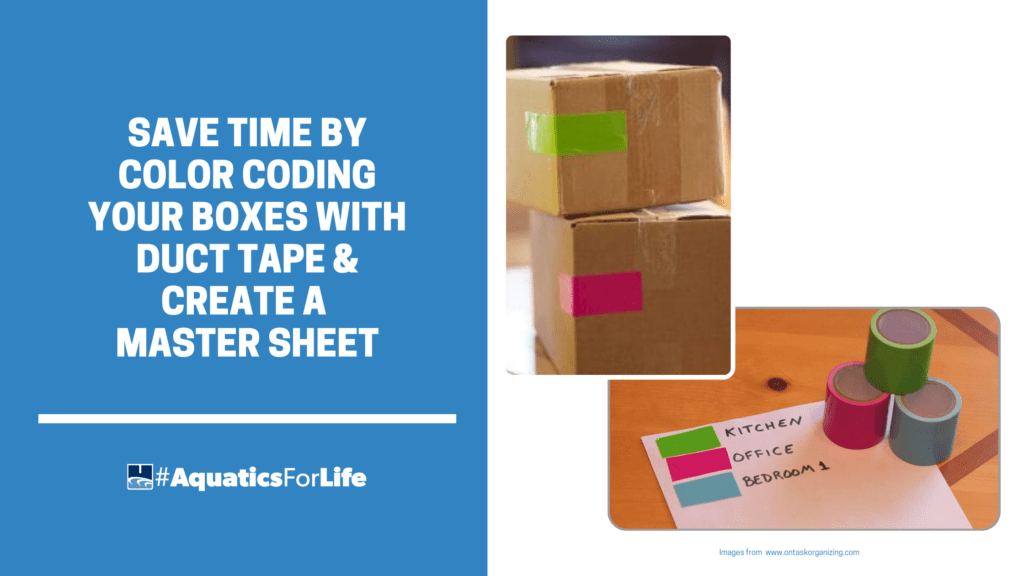Let me start by saying, “WOOHOO!!!” You have officially made it through yet another summer which has genuinely been unprecedented for aquatics operators. I hope that you’re dreaming of a few extra days off!
However, we all know that there are tasks to be completed before the season is officially closed out. From taking seasonal team members off payroll to coordinating winterization of outdoor pools and transitioning into Fall operations, September is often an extension of our summer season. As you start to close seasonal operations, here are some tips, tricks, and tools to tackle the project with intent.
Start with a plan!
Plan the work with intent and share your plan with the team members who are helping so that everyone can work the plan together!
Think About Next Year First:
Closing up is as much about finishing up this year as it is preparing for next year. Before you head out, think about what opening up next year will look like.
- Invest in a label maker (this Dymo handheld is a winner) and label your storage areas and boxes of equipment/supplies. Some operators take it one step further and include a complete inventory of each box on the outside; use a half-page label to add a printed list on the box and cover with clear packing tape so that the ink doesn’t bleed.
- Consider color-coding boxed items with colored duct tape. Whether you choose to color code by location or by area (lifeguard office, front desk, maintenance, custodial, etc.), add a strip to the corner of your boxes and hang a laminated master sheet in your storage area. Number each box or storage tote and record the contents, so it’s easy to find in the future.
- Keep a running inventory of everything you put in storage. How many rescue tubes, fanny packs, backboards/straps/head immobilizers, rolls of cash register tape, mop buckets, etc., did you bring back to storage?
- If you have items that might mold in storage, like pool noodles or water dumbbells, consider leaving them in the sun to dry while working on the rest of your spaces!

Save / Donate / Toss:
Before you head out to your seasonal locations, write down the parameters for what you’ll save, donate or toss.
- Think about how you’ll handle the equipment. How will you decide if you should keep that cracked rescue tube or broken trash can? Be sure that you consider your agency’s guidelines on discarding versus when to surplus retired equipment.
- Consider items in lost and found. Many local animal shelters will accept clean used towels, and children’s homes often take clean, slightly worn clothing and shoes. Know who will ultimately be responsible for collecting, cleaning, and delivering these items.
- Have a plan for paperwork. If you don’t keep every item, know your agency’s policy on what items have to be shredded and what can be recycled.
Prepare Your Paperwork:
If you don’t already use a digital documentation system, before that box or tote is closed up for storage, ensure the paperwork is organized. Seasonal team members rock (seriously – where would be without them?), but they don’t always keep things as organized as we want.
- Do a quick pass-through and make sure chem logs are stored together, incident reports are properly filed, and attendance reports are organized.
- Remember to direct any confidential paperwork back to your office (like incident reports) or that you need to process end-of-season reports.
- If items need to be digitized, know who is responsible for that task and what should happen to the pages once digitized.
- If you use a digital documentation system such as HydroApps, know if your state requires you to download items such as pool logs or checklists.
Organize Your Equipment for Next Year:
In the exhaustion of ending the season and the fast pace of moving into the Fall, it’s easy to throw stuff into storage so that you can deal with it later. Taking the time now to organize will make things easier for you in the spring so you can focus on recruiting, hiring, and training for another fantastic summer!
- If you have stored old paperwork, discard the items you no longer need to keep, like outdated manuals, expired forms, etc., before you start loading in new paperwork!
- If you have a lot to store, consider marking the floor and defining a space for each item. This will help keep things collected and keep walkways clear.
- Consider moving toward standard storage boxes or totes and open shelving units.
- Build up if you can and make use of tall ceilings! If you’re short like me (or might have fun-sized team members), make sure you have a sturdy step stool or ladder so everyone can safely reach those shelves!
- Use large trash cans to store your squeegees and brooms, or consider buying hanging tool storage (or make your own) to use open wall space.
- Consider utilizing tension rods to hang spray bottles between storage shelves or under cabinets to take advantage of every bit of space!
- Before you start putting items in storage, think about leaving easy access to any items you might need to get to over the off-season.
- Be sure to leave a lined trash can out to collect trash as you work in your storage area throughout the year!

